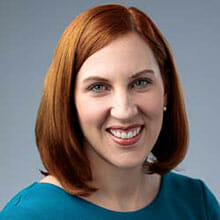
A public-private approach to housing and care is imperative as the number of middle-income baby boomers over age 75 reaches 16 million in the next decade. That assessment comes from Caroline Pearson, project director for the groundbreaking Forgotten Middle study at National Opinion Research Center (NORC).
An update of the 2019 study released Wednesday estimated that 11 million middle-income seniors won’t be able to afford assisted living and won’t qualify for Medicaid-subsidized long-term care, possibly shifting more care to the home. Pearson told McKnight’s Home Care Daily Pulse the U.S. needs to develop policies now that allow middle-income seniors to tap public funding for housing and care.

“Middle-income people have meaningful income resources that they could be devoting to their housing and care needs, but not at the level that would be required if they need significant caregiving,” Pearson explained. “We don’t as a country really have a comprehensive system to support middle income people as they age. There are a variety of policy options. PACE is one.”
Programs for All-Inclusive Care for the Elderly (PACE) is a Medicare-Medicaid program that allows low-income seniors to age in their communities, but also receive some healthcare and social services at centers. Some PACE providers are pushing to open the program to more seniors who would pay a sliding fee for PACE based on their income.
Expanding PACE to middle-income seniors is a promising option, according to Bob Kramer, founder of senior housing and care consulting firm Nexxus Insights. However, Kramer told McKnight’s Home Care Daily Pulse that home care and senior housing providers must get creative in developing other alternatives for the massive middle-income market.
“They’re going to have to think about how to achieve scale that allows them to lower the price per unit or cost per visit,” Kramer said. “They are going to have to make better use of technology and technology platforms to become more efficient.”
Pearson fears the number of middle-income seniors could grow even larger over the next decade if the U.S. and global economies contract.
“We could see people in our model who look like they are going to be high income, but when the financial performance changes they may drop to that middle-income group,” she said.



